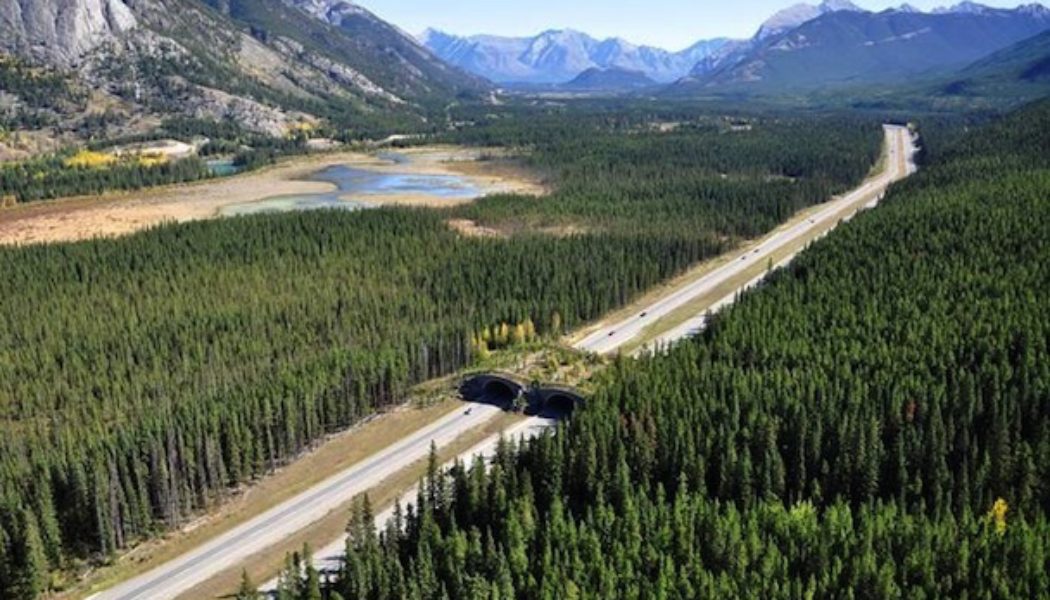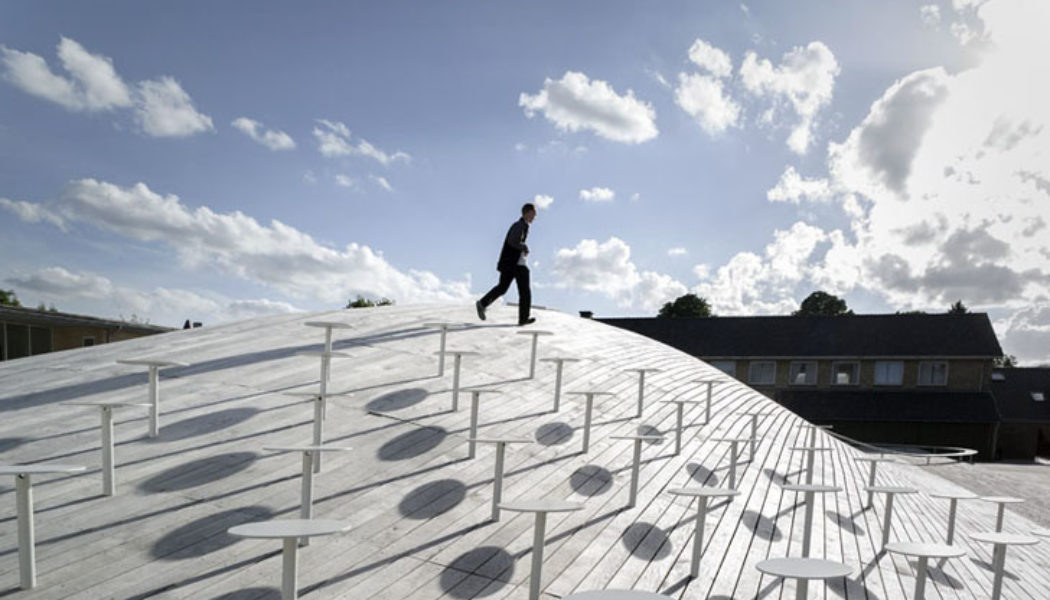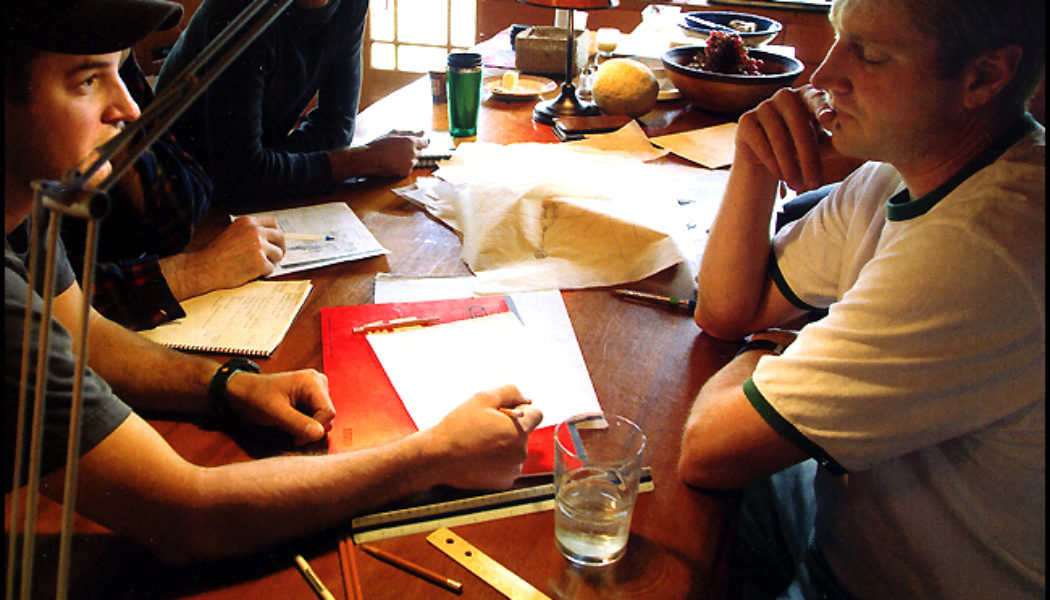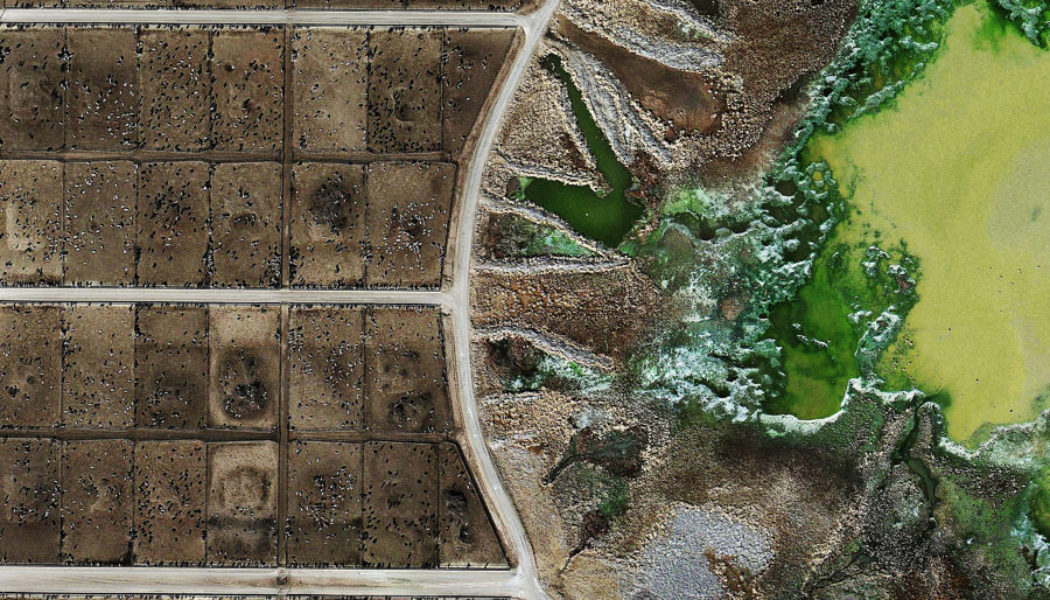Blog
The Daily Blend for Tuesday, August 13, 2013
Bears, elk, and wolves rejoice: Canada’s Banff National Park has installed animal overpasses and underpasses that have been successfully proven to facilitate safe animal crossings over the four-lane Trans-Canada Highway. (Story Board) LANDSCAPE ARCHITECTURE Alice Webb takes a stroll through Montreal’s public spaces, keeping an eye out for tastefully patterned pavement. (Land Perspectives) How do you feel about out-of-state landscape architects practicing in your neck of town? Local landscape architect Michael Gibbons has some strong opinions. His two complaints filed with the North Carolina Board of Landscape Architecture have successfully stalled the efforts of New York-based Christopher Counts from moving forward on Raleigh’s Moore Square Redesign. (Raleigh Publ...Read More
The Daily Blend for Monday, August 12, 2013
Earth’s hypnotizing seasonal “heartbeat” from outer space. John Nelson stitched together twelve of NASA’s satellite images into a gif that shows the seasonal changes in vegetation and land ice around the world, almost making Earth appear as a living, breathing entity. (Co.Design) LANDSCAPE ARCHITECTURE The U.S. Army Corps of Engineers will soon announce a new vision for the Los Angeles River, which had been cast in concrete eighty years ago. Until the announcement, take a look at five dramatic redesigns of L.A.’s river by SWA landscape architecture interns from all around the world. (Curbed LA) Can restorative landscape design cut down recidivism rates for prisoners? Iowa State landscape architecture students think so by helping in the design of a therap...Read More
Mobile Park: Alex Vladovici Interview
Public spaces are constantly changing in today’s cities. Rather than destroying them or completely rearranging them, more and more landscape architecture projects focus on converting spaces to better serve the community. The city of Cluj-Napoca is an example of such a project, coordinated by Asta association president Alex Vladovici. I talked to him to get a perspective on how such projects work and why we need to implement them more in the future. Tell us a bit about the project… What is the Mobile Park? After studying the city, following careful considerations, mainly based on community and how people use public spaces, we found that there are a lot of small neglected green spaces, which provide no use for nearby residents, sometimes being ‘bullied’ by cars and garbage. The Mobile Park...Read More
The Daily Blend for Friday, August 9, 2013
St. Louis spends upwards of $200,000 a year mowing the city’s vacant lots. A winner of the inaugural Sustainable Land Lab Design Competition, the Sunflower+ Project aims to rethink vacant land by planting fields of sunflowers that can remediate the soil and bring in some extra income. (Sam Fox School) LANDSCAPE ARCHITECTURE Laurie Olin shares tales from what life was like growing up in Alaska to his journey through landscape architecture in this illuminating half-hour podcast with the National Endowment for the Arts. (OLIN) St. Louis spends upwards of $200,000 a year mowing the city’s vacant lots. A winner of the inaugural Sustainable Land Lab Design Competition, the Sunflower+ Project aims to rethink vacant land by planting fields of sunflowers that can remediate the soi...Read More
A Gift of Beauty and Friendship – Royce Pollard Japanese Friendship Garden
Friendship, like all living things, requires regular tending to keep it thriving. And the Royce Pollard Japanese Friendship Garden in Clark College, Vancouver, does just that — strengthening the bonds of friendship and symbolizing life and beauty between Japan and the city of Vancouver. The garden is a gift from Dr. Chihiro Kanagawa, CEO of Shin-Etsu Chemical Company, the parent company of SEH America. For its construction, he made a whopping $1 million donation and named the friendship garden in honor of former Vancouver Mayor Royce E. Pollard. Kanagawa called the garden a “lasting symbol of close friendship beyond business that has matured over the years with this city.” Design Features Murase Associates has designed the garden to create a meditative and peaceful pausing place on a...Read More
The Daily Blend for Thursday, August 8, 2013
Acclaimed international architecture firm BIG cleverly slipped a multifunctional gymnasium beneath a molehill courtyard, blending a social arena up top with a new sports facility down below. (inhabitat) LANDSCAPE ARCHITECTURE Philadelphia-based Groundswell Design Group transforms a vacant lot into a lively Pop Up Beer Garden with upcycled shipping containers, colorful umbrellas and lights, locally sourced fare, and an array of artistic and cultural activities. (World Landscape Architect) What happens when a plant biologist and a landscape architect team up to create a garden on a California hillside? Surprising plant combos at every turn! (Sunset) ASLA is hiring a web and graphic designer. (ASLA) Welcome to the United States of Mulch. Thomas Rainer asks why Americans love mulch s...Read More
Skateboarding, Space and the City by Iain Borden | Book Review
Do you ever read design books and wonder what they have to do with your reality? Yes, I’m addressing landscape architects on this one, as I am one of you who constantly questions this. It’s as if the objective of architectural discourse is to find everything fun, sacred, and beautiful about the world and turn it into a dialogue that only a few can understand while excluding the people who originally came up with the idea or thought. I suppose there are some who feel included in the established fabric of the city, while others do not. These people may occupy space between the cracks and have a perception of space and urban life quite contrary to the way it was intended. This book is for those who embrace the cracks and gaps and find their identity among them. What is this book a...Read More
Olithas by Landscape Forms
Olithas by Landscape Forms is part of their new Terrace Life initiative that marks the company’s entry into lifestyle furniture for more intimate, social, high-design outdoor spaces. “Design professionals know Landscape Forms as a manufacturer of site furniture for streetscapes, parks and campuses,” explains company president Richard Heriford. “Now we are going to places we haven’t been before with furniture by award-winning architects and landscape architects designed specifically for terraces, rooftop gardens and other private and protected spaces. With Terrace Life we’re creating new modern classics.” More after the jump… Olithas is a table and bench collection by architect/industrial designer Efrain Velez that draws on his grounding in classical and international style an...Read More
The Daily Blend for Wednesday, August 7, 2013
Say hello to drip irrigation in its funky new form. Aqueduct is a 3D-printed modular mini planter system that can be set up in numerous different configurations. (Urban Gardens) LANDSCAPE ARCHITECTURE A highway that has long choked the flow of the Everglades and upset the ecosystem is slowly being raised, segment by segment, to allow water to flow underneath the road. (Landscape Architecture Magazine) Open Voice sits down with Principal Thomas Woltz, FASLA, CLARB and Senior Associate Jeffrey Longhenry of Nelson Byrd Woltz to discuss their sustainable design approach to the Naval Cemetery Landscape project. (Nature Sacred) James Patchett, FASLA, has been announced the 2013 recipient of the Christian Petersen Design Award by the Iowa State University College of Design. Patchett is fo...Read More
Interview with Pete Nelson of Animal Planet’s Treehouse Masters
You may know him as “The Treehouse Man” from Animal Planet’s Treehouse Masters, but Pete Nelson of Nelson Treehouse and Supply is also one of the eminent authorities on the subject of arboreal architecture. He builds treehouses, writes books about treehouses, and provides the world with materials and supplies for treehouses. Treehouses have been a large part of Pete Nelson’s life for more than 20 years. It was Pete Nelson’s inspiring talk at Dwell on Design in June of 2013 that led to this follow-up interview. Why build treehouses? I build treehouses because they move me. They get me up, excite me, and put me outdoors and in the woods. They challenge my creative side and also unite me with friends, colleagues, and, when I’m really lucky, entire communities. Sam’s Treehouse, Wash...Read More
The Daily Blend for Tuesday, August 6, 2013
Crochet Queen Olek takes yarn bombing on a whole new track after covering an entire locomotive with crochet in just two days. (Inhabitat) LANDSCAPE ARCHITECTURE SWA Group selected to lead a team of design firms in conducting a $500,000 study of how to best develop Fort Wayne’s downtown riverfronts in Indiana. (News Sentinel) St. Louis’ “Park over the Highway” broke ground last Friday–a long anticipated project that aims to reconnect the downtown area with the iconic Gateway Arch and riverfront. Though Eric Jaffe acknowledge’s the progress the city has made, it would have been better to demolish the underutilized highway and to construct a park closer to grade-level of the riverfront. (Atlantic Cities) Newark celebrated the opening of Newark Rive...Read More
The Daily Blend for Monday, August 5, 2013
Amazing and disturbing photographs of Texas’s most valuable landscapes–its feedlots and its oilfields–as assembled from satellite imagery by British photographer Mishka Henner. (Edible Geography) LANDSCAPE ARCHITECTURE What can be done about Detroit? In addition to incorporating lessons of the city’s downfall into our classrooms, Tom Turner suggests looking at landscape architecture as a solution with a planned regeneration of the city’s ecosystem. (Garden Visit) Urban Gardens takes us on tour of the lush, eco-friendly landscape design at Nizuc Resort near Cancun, Mexico. (Urban Gardens) The success of a landscape architect’s vision depends heavily on landscape management. Kathy Blaha explains how Atlanta’s Piedmont Park–the “...Read More
























